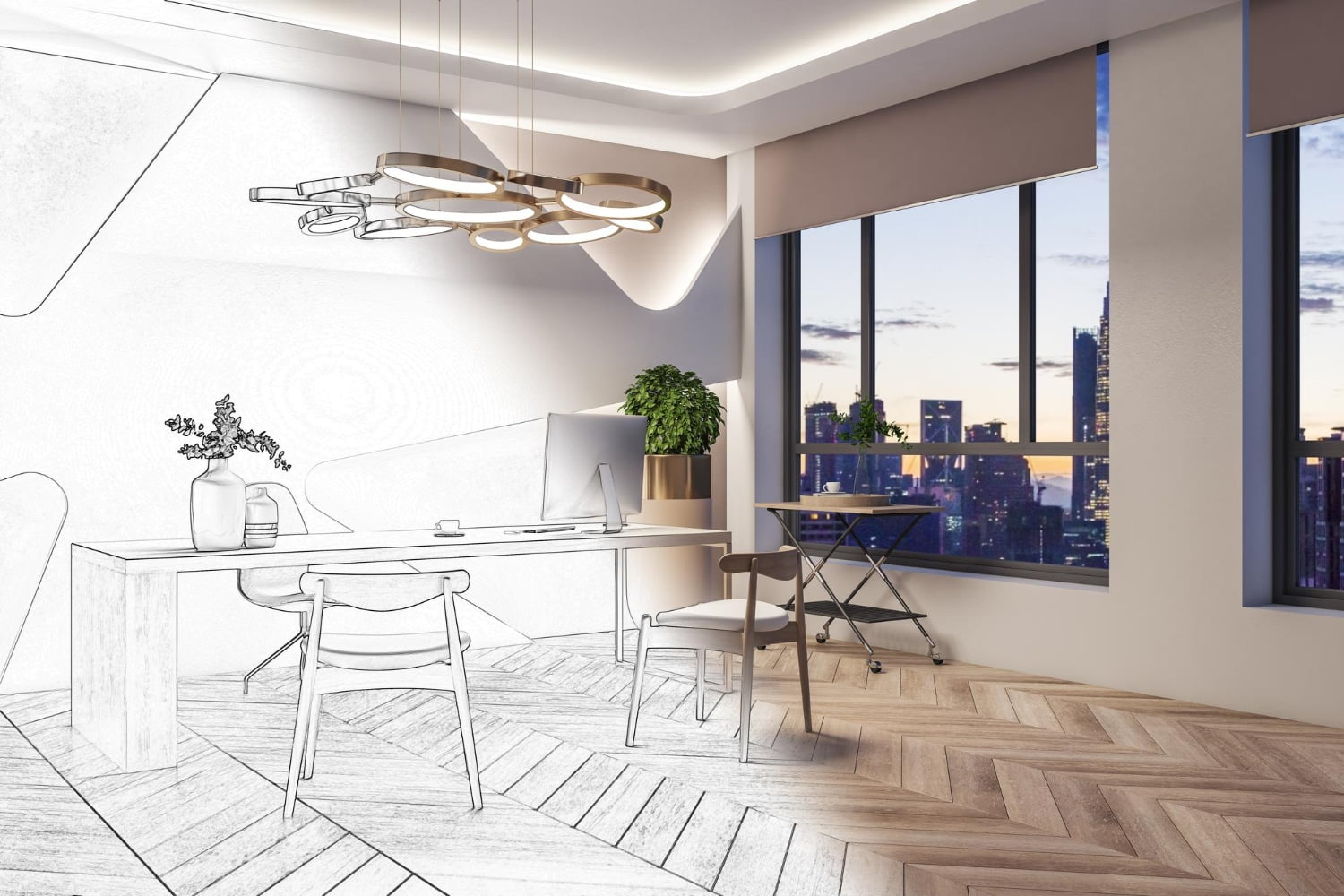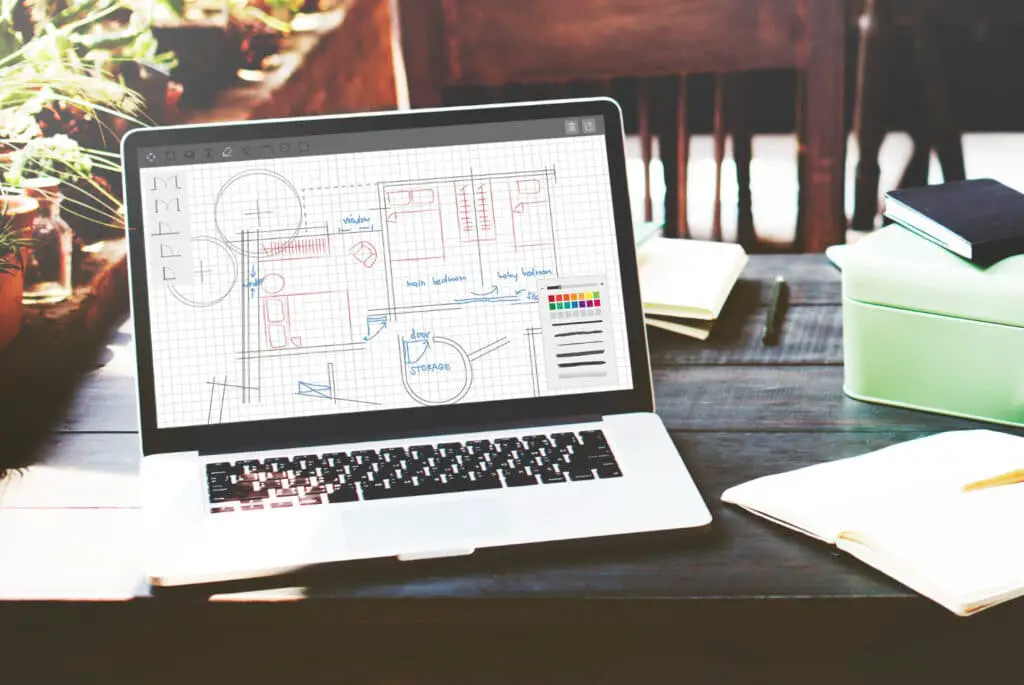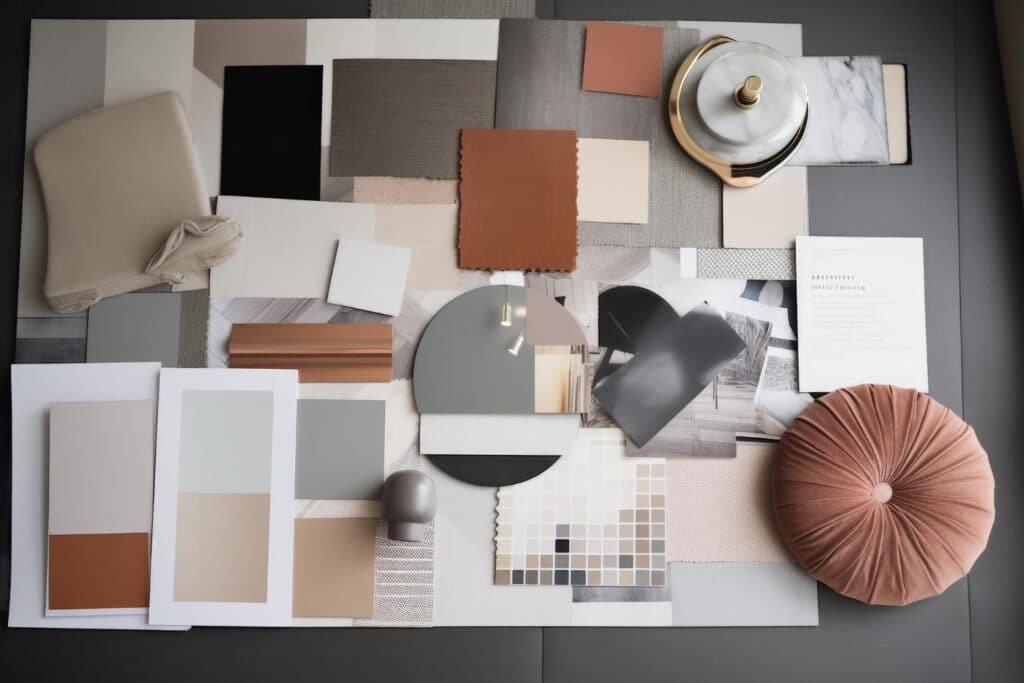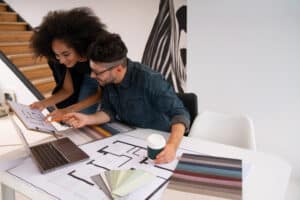Free Shipping On All Orders
eDesign Interior Design: Revolutionizing Home Makeovers in 2024

Edesign interior design is revolutionizing the way people approach updating and personalizing their living spaces. With the integration of technology and design principles, Edesign has become a popular choice among homeowners and design enthusiasts who want a customized, visually appealing, and functional space without breaking the bank. This method of design allows clients to collaborate with skilled designers remotely, receiving all of the expertise and benefits of traditional interior design without the overhead costs and time constraints.
As technology advances, Edesign makes it possible for clients to connect with designers from all over the world, providing access to a wealth of design styles and knowledge that transcends geographical boundaries. With the use of various tools and software, clients can collaboratively create digital mood boards, furniture layouts, and 3D visuals that bring their vision to life. Edesign offers a unique opportunity for both design professionals and clients to work together efficiently and effectively, resulting in stunning interior spaces that are tailored to meet individual needs and tastes.
Key Takeaways
- Edesign interior design combines technology with traditional design principles for a cost-effective, personalized approach.
- Connecting with experts worldwide, clients experience a diverse range of design styles and knowledge.
- Tools and software facilitate collaboration, allowing for the successful creation of customized interior spaces.
7 Powerful Fundamentals of Edesign Interior Design
When it comes to edesign interior design, there are some key fundamentals that can help you create a stunning and functional space. Here they are:
- Understanding your needs: Begin by assessing the requirements of the space you are designing. Consider the purpose of the room, the number of people who will use it, and the various activities that will take place there.
- Establishing a budget: Before diving into any edesign project, decide on a budget that suits your financial situation. This will help you set realistic expectations and avoid potential setbacks during the design process.
- Gathering inspiration: Collect ideas and inspiration for your edesign interior design project. Browse through magazines, blogs, and social media platforms to find styles and colors that resonate with you.
- Selecting a color palette: Choose a color scheme that reflects your design vision and complements the space. Consider the room’s lighting, as well as the colors of existing furniture and decor.
- Incorporating focal points: Create eye-catching focal points within the space, such as a statement piece of artwork or a unique furniture item. These can draw attention and set the tone for the entire room.
- Choosing functional and aesthetically pleasing furniture: Select furniture pieces that not only serve their intended purpose but also enhance the room’s overall design. Consider the scale, proportion, and materials when making your selections.
- Adding personal touches: Incorporate elements into your edesign interior design that reflect your personality and style. Personalized items, such as family heirlooms or travel souvenirs, can make the space feel more authentic and inviting.
By following these seven fundamentals of edesign interior design, you can craft a beautifully designed space that truly reflects your personal style and meets your functional needs.
7 Powerful Key Principles of Edesign
When you embark on your edesign journey, it’s essential to keep a few key principles in mind. These guidelines will help you create stunning and functional spaces that cater to your unique tastes and lifestyle.
1. Balance: Achieving a harmonious look in your space requires a proper balance of elements. Consider the distribution of objects, furniture, and colors throughout your interior design. Play with different layouts, asymmetry, and symmetry to find the perfect arrangement that complements your style.
2. Contrast: Boost visual interest in your edesign by using contrasting colors, textures, and shapes. Mixing and matching distinct elements will keep your eyes engaged, making your space feel dynamic and alive.
3. Functionality: Remember to prioritize function over aesthetics. Ensure each space serves its intended purpose, keeping in mind elements like ease of movement, accessibility, and storage. A successful edesign merges both practicality and beauty seamlessly.
4. Focal Point: Emphasize a central point in the room, such as an artwork, fireplace, or unique piece of furniture. A well-chosen focal point draws the eye and showcases your edesign’s essence, creating a cohesive and engaging space.
5. Rhythm and Repetition: Generate a sense of unity in your edesign by repeating patterns, colors, or elements. This practice will create a visual rhythm that maintains harmony and consistency within your space.
6. Proportion and Scale: Pay attention to the size and proportion of your design elements. Choose furniture and accessories that fit well within the room without overpowering it. Mixing various sizes and dimensions adds depth to your edesign without compromising space.
7. Lighting: Utilize multiple sources of lighting to highlight and accentuate your edesign’s features. Consider ambient, task, and accent lighting to create the perfect atmosphere within your space and showcase your design choices.
Remember these principles during your edesign process to create unified, functional, and eye-catching spaces that reflect your personality and lifestyle.
Essential Tools and Software for Edesign Interior Design

As an edesign enthusiast, you should be familiar with various tools and software that can help you create beautiful designs. Below is a brief list of five essential tools and software that you should consider using.
- SketchUp: One of the most popular 3D modeling software, SketchUp offers a vast range of features and an easy-to-use interface for designing and visualizing spaces. The free version, SketchUp Free, is available for all levels of designers, while the paid version, SketchUp Pro, comes with extended features for professionals.
- AutoCAD: A widely-used tool for architects and interior designers, AutoCAD enables you to create, edit, and share 2D and 3D designs with utmost precision. Its extensive library of tools and customizable features make it a preferred choice for many professionals.
- Adobe Photoshop: Renowned for its powerful photo editing capabilities, Photoshop can also be beneficial in edesign interior design. It allows you to create compelling visuals by manipulating and blending multiple images, adding textures, and applying color adjustments.
- Homestyler: This user-friendly online tool offers various functionalities like creating floor plans, adding furniture and decorations, and visualizing your design in 3D. It’s a great option for those looking for a straightforward way to create interior designs without complex software.
- Pinterest: While not a design tool per se, Pinterest is an excellent source for inspiration. It allows you to discover and save design ideas, color schemes, and furniture concepts from various sources, helping you to refine your vision.
Incorporating these tools and software in your edesign interior design process will not only make the task more enjoyable but also improve the quality and efficiency of your work. Stay up-to-date with the latest trends and developments in these tools to enhance your skills and stay competitive in the edesign interior design market.
An Exciting Comparison: 5 Key Differences Between Edesign and Traditional Interior Design
When it comes to enhancing the aesthetics of your space, you have two main options – Edesign and traditional interior design. Each offers its unique advantages, but it is important to understand the key differences between the two to help you make the best decision for your project.
1. Physical Presence vs. Remote Process
Traditional interior design requires the physical presence of a designer at your location, while Edesign occurs entirely online. With Edesign, you communicate with your designer through email or digital platforms, eliminating the need for in-person consultations, making it easier for you to get your project started.
2. Price Differences
Another significant difference between the two is the price. Traditional interior design often costs more due to the designer’s travel expenses and face-to-face consultations. On the other hand, Edesign is generally more affordable, as the designer works remotely, reducing overhead costs.
3. Ongoing Communication and Flexibility
With Edesign, the level of communication and flexibility is higher as it is more time-efficient. You can easily provide updates, share your ideas, and make changes through digital platforms. In contrast, traditional interior design typically involves fewer consultations and requires more effort to schedule meetings and site visits.
4. Customization and Personal Involvement
Edesign allows you, the client, to be more involved in the design process. You have the opportunity to add your personal touch by making decisions and providing input throughout the project. In traditional interior design, the designer often has more control and personal input, which might reduce your involvement in the process.
5. Speed and Efficiency
Lastly, the turnaround time for Edesign projects tends to be faster than traditional interior design. Since communication happens online, Edesign is often more efficient, allowing you to see the results in less time. Traditional interior design can take more time due to the logistics of in-person meetings and physical sampling.
By understanding these key differences, you can determine which approach best suits your needs and preferences in creating the perfect space in your home or office.
Steps to Get Started With Edesign
Finding Your Style

To begin your edesign journey, start by identifying your personal style. Take a look around your home and consider which aspects you love and which ones you’d like to change. You can also browse through design websites and magazines to gather inspiration and identify styles that resonate with your tastes.
Next, create a mood board to help visualize your desired aesthetic. Include images, colors, and textures that inspire you. Your mood board will act as a guide when selecting design elements for your space.
Planning Your Space
Once you’ve established your style, evaluate the space you’re working with. Take measurements of the room, as well as any existing furniture you plan to incorporate. Consider the room’s functionality and how you want it to flow. Sketch out a rough floor plan to help visualize furniture placement and traffic patterns.
Keep in mind any architectural features such as windows, doors, and lighting fixtures. These elements can influence the overall design and dictate the placement of certain furniture pieces and accessories.
Selecting Your Design Elements
With your style and space plan in mind, begin selecting the various design elements for your space. These include:
- Furniture: Prioritize the main pieces of furniture, such as sofas, beds, or dining tables. Consider how they’ll fit into your plan and complement your style.
- Color scheme: Choose a color palette that reflects your taste and the desired atmosphere for your space. This can include wall colors, furnishings, and accessories.
- Textures and materials: Incorporate a mix of textures and materials to add depth and interest to your design. Consider the combination of soft furnishings, rug selections, and upholstery.
- Lighting: Assess your existing lighting situation and determine if any changes or additions should be made. Consider a mix of ambient, task, and accent lighting to create a dynamic atmosphere.
- Decorative accessories: Finally, add personality and style to your space with accessories such as artwork, throw pillows, and decorative objects.
Throughout the process, refer back to your mood board and space plan to ensure your selections align with the overall aesthetic and functionality of your room. By following these steps, you’ll be well on your way to creating a fabulous edesign that showcases your unique style and maximizes your space’s potential.
Top 3 Edesign Platforms: Empower Your Interior Design
Houzz
Houzz is a popular platform that connects homeowners with interior design professionals. It offers various features such as ideabooks, articles, and a marketplace where you can purchase products for your home. You can browse through a vast array of design ideas and collaborate with professionals to bring your vision to life. With its user-friendly interface, you’ll easily navigate through the website and discover inspiring designs to transform your living spaces.
Decorist
Decorist is an online interior design service that matches you with professional designers based on your style preferences and budget. They provide three design packages for you to choose from, with each package offering multiple concept boards, a final design board, shopping list, and direct communication with your assigned designer. This easy, personalized, and affordable approach to interior design allows you to create beautiful spaces tailored to your unique taste and lifestyle.
Modsy
Modsy is an innovative platform that uses advanced 3D rendering technology to help you visualize your redesigned space better. After you upload photos and measurements of your room, Modsy creates a 3D model that showcases various design ideas. You’ll receive two initial design concepts, and you can work with a Modsy Designer to revise them until you’re satisfied with the outcome. Additionally, their virtual showroom enables you to shop for furniture and decor directly through the platform, making the process of updating your space smoother and more convenient.
Powerful Benefits and Challenges of Edesign
Cost Efficiency
Edesign can save you money as it generally provides more affordable design services than traditional interior design. You can avoid expenses related to on-site consultations, travel fees, and markups on products. With edesign, all collaboration is done online, so the affordability aspect comes into play.
Flexibility
The convenience of communication and project management online makes the edesign process flexible for both you and the designer. You can complete tasks at your own pace, review plans, and provide feedback without the need for in-person meetings. This allows you to balance your design project with other day-to-day commitments seamlessly.
Communication Barriers
One challenge in edesign is the potential for communication barriers. Without face-to-face interactions, it may be harder to express your design preferences or concerns. Moreover, misunderstandings can occur, leading to delays or even dissatisfaction with the final outcome. To minimize miscommunications, be careful with your choice of words and utilize visual aids, such as mood boards and images, as much as possible.
Limitation of Virtual Imaging
Though edesign offers the advantage of visualizing your space using digital renderings, it is not without limitations. Virtual imaging may not always accurately portray colors, textures, and proportions. There is still a chance that the finished product may differ from the digital representation. To minimize discrepancies, ensure you and your designer make informed decisions using correct measurements and high-quality visuals.
Frequently Asked Questions
What is eDesign?
EDesign is an online interior design service that allows clients to work with a designer remotely to create a customized design plan for their space.
How does eDesign work?
The eDesign process typically involves filling out a questionnaire, sharing photos and measurements of the space, and collaborating with the designer through email or video calls.
What are the benefits of eDesign?
EDesign is often more affordable than traditional interior design services, and it offers more flexibility and convenience for clients who may not have the time or resources for in-person consultations.
If you liked this post about 2000s interior design, don’t forget to follow us on Pinterest so you don’t miss any more interior design news!


